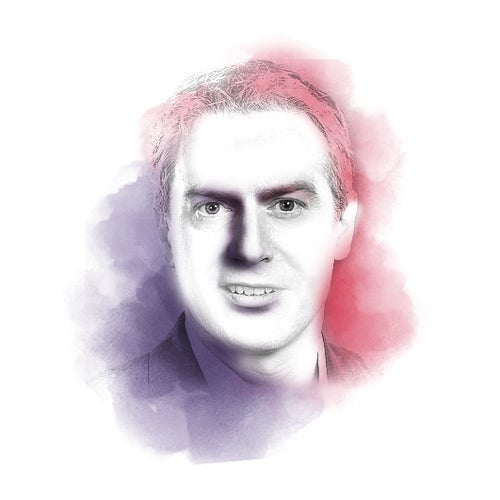Googling “anti-aging” will give you nearly 80 million hits — proof of our obsession to somehow check the relentless onslaught of aging.
But even ‘anti-aging’ treatments with strong scientific support may not actually retard aging — they merely prolong life, a recent study on mice suggests. The researchers say the distinction is a vital, but overlooked, one.
The signs of aging — wrinkles, wheezing when exerting oneself, forgetfulness, and receding hairlines. These are all indicators of the underlying process of aging, and there are host of other, more scientifically rigorous ones.
Scientists have found some treatments that seem to slow aging in animals such as mice. For example, fasting has been shown to extend the lifespans of mice. But therein lies the problem — many studies equate longer lifespans with anti-aging.
“Lifespan has been very commonly used as the most important proxy for aging,” explains Dan Ehninger of the German Center for Neurodegenerative Diseases (DZNE) in Bonn. “So, for example, when looking for genes that influence aging, researchers knock out a gene in mice and if they live longer, the researchers conclude that aging has been slowed.”
However, that doesn’t necessarily follow, Ehninger argues. He suspected that many such treatments might extend lifespan by reducing the likelihood of contracting cancer, for example, but leave the aging process unaffected. It’s comparable to treating the symptoms of a disease (aging, in this case), but not dealing with the underlying pathology.
Now, teams led by Ehninger and Martin Hrabě de Angelis of Helmholtz Munich (German Mouse Clinic) and the German Center for Diabetes (DZD) have jointly conducted a thorough analysis of about 130 signatures of aging in mice. The study, which was published in Nature Communications, included a slew of measurements on things like chemicals in blood and changes to the immune system, bones, heart, brain and behavior.
Almost all these indicators were stable up to about five months after birth, but they would then invariably slide as the mice got older. Considered together, these parameters are highly accurate indicators of the biological age of mice.
“We then used the parameters to investigate three interventions scientists commonly consider to slow aging in mice — intermittent fasting and two genetic mutations that have been shown to extend lifespans of mice,” explains Hrabě de Angelis.
The three interventions did not improve most of the parameters, and, if they did, they often produced similar effects in young mice as in older mice — strong evidence that they weren’t slowing aging.
Some may need convincing of the finding. “Lots of scientists are really sold on the idea that these lifespan extenders are in fact aging regulators,” says Ehninger. “I think our finding has come as a surprise to many.” But the evidence from the five-year study is overwhelming: “We conducted a tour-de-force experimental study to establish the point with lots of data. And so I think it’s hard to dispute the conclusion.”
Are there other treatments out there that can slow aging? “That’s the million-dollar question,” says Ehninger. “I’d be surprised if there was a single magic bullet.”
Reference:
Xie, K. et al. Deep phenotyping and lifetime trajectories reveal limited effects of longevity regulators on the aging process in C57BL/6J mice. Nature Communications 13, 6830 (2022). https://doi.org/10.1038/s41467-022-34515-y
For additional background, see also:
Keshavarz, M. et al. Targeting the “hallmarks of aging” to slow aging and treat age-related disease: fact or fiction? Molecular Psychiatry 28, 242–255 (2023). https://doi.org/10.1038/s41380-022-01680-x
 A senior research group leader at the German Center for Neurodegenerative Diseases (DZNE) in Bonn, Dan Ehninger is interested in the biology of aging and the pathogenesis of age-related brain disorders. He studied medicine at Charité University Medicine/Berlin, Harvard Medical School/Boston and University College London. From 2001 to 2004, he conducted his graduate work at the Max Delbrück Center for Molecular Medicine in Berlin on the behavioral regulation of adult hippocampal neurogenesis and adult cell formation in the neocortex. His postdoctoral work (2004 to 2009) at University of California - Los Angeles focused on molecular and cellular mechanisms of cognitive impairments in mouse models of neuropsychiatric disorders. He joined DZNE in 2010.
A senior research group leader at the German Center for Neurodegenerative Diseases (DZNE) in Bonn, Dan Ehninger is interested in the biology of aging and the pathogenesis of age-related brain disorders. He studied medicine at Charité University Medicine/Berlin, Harvard Medical School/Boston and University College London. From 2001 to 2004, he conducted his graduate work at the Max Delbrück Center for Molecular Medicine in Berlin on the behavioral regulation of adult hippocampal neurogenesis and adult cell formation in the neocortex. His postdoctoral work (2004 to 2009) at University of California - Los Angeles focused on molecular and cellular mechanisms of cognitive impairments in mouse models of neuropsychiatric disorders. He joined DZNE in 2010.
 Martin Hrabĕ de Angelis’ research areas include genetics, diabetes, phenotyping and data mining. He studied biology at Philipps University in Marburg and completed his PhD on the influence of growth factors on early embryonic development. As a postdoctoral researcher at the Jackson Laboratory in Bar Harbor (USA), he examined the Delta/Notch signaling pathway and somitogenesis. He is research director of Helmholtz Munich and director of the Institute of Experimental Genetics at Helmholtz Munich. He also holds the chair and full professorship of Experimental Genetics at Technical University Munich (TUM). He is the director of the European research consortium INFRAFRONTIER. He founded the German Mouse Clinic (GMC, 2001) and is co-founder and board member of the German Center for Diabetes Research (DZD) and an elected member of the German National Academy of Science (Leopoldina).
Martin Hrabĕ de Angelis’ research areas include genetics, diabetes, phenotyping and data mining. He studied biology at Philipps University in Marburg and completed his PhD on the influence of growth factors on early embryonic development. As a postdoctoral researcher at the Jackson Laboratory in Bar Harbor (USA), he examined the Delta/Notch signaling pathway and somitogenesis. He is research director of Helmholtz Munich and director of the Institute of Experimental Genetics at Helmholtz Munich. He also holds the chair and full professorship of Experimental Genetics at Technical University Munich (TUM). He is the director of the European research consortium INFRAFRONTIER. He founded the German Mouse Clinic (GMC, 2001) and is co-founder and board member of the German Center for Diabetes Research (DZD) and an elected member of the German National Academy of Science (Leopoldina).


